MaxQ: Spaceflight Toolkit for Unreal Engine 5
Now anyone can create authentic space-based gameplay and cinematic experiences.

Project Details
- Project Type : Toolkit
- Game Engine : Unreal Engine 5
- License : MIT
- GitHub Release Date : 25 Dec 2021
- Marketplace Release Date : 10 Jun 2022
MaxQ Spaceflight Toolkit Plugin for Unreal Engine 5
Now Available in the Unreal Engine Marketplace
Gamergenic has integrated NASA’s SPICE Toolkit for spaceflight with Epic Games' realtime content creation platform Unreal Engine 5. MaxQ: Spaceflight Toolkit for Unreal Engine 5 empowers anyone to easily build exciting, authentic spaceflight visualizations or cutting edge space-based gameplay, no programming experience or astronautical engineering degree required. The toolkit solves challenging space flight problems in a real-time visualization environment - opening up new opportunities across an exciting spectrum of applications.
Content creators can choose from a wide range of features to simulate real-time celestial body and vehicles. These models span from very simple and basic “2-body” orbital motion solutions, up through real-world highly advanced computations. Advanced features include accurate n-body orbit solutions, orbit and spin axis precession, astronomical nutation. The toolkit can even apply the relativistic effects of gravity and light aberration due to light travel time if desired. The toolkit provides numerous options to quickly create the exact real-time experience a creator envisions.
All of this is available without writing a single line of code through Unreal Engine 5’s Blueprint Scripting System. The toolkit’s functionality is accessibly from both Blueprints and C++ with feature level parity between each.
Because the toolkit is powered by NASA’s SPICE toolkit, which is very well documented, users of MaxQ can readily find examples and help solving problems. The names of all elementary operations are consistent between the two toolkits, enabling users to quickly find reference materials via web searches or by reviewing documentation produced by NASA/JPL.
MaxQ is the first of several tools developed by Gamergenic in support of a planned game release currently in development. The toolkit is available to content creators under the MIT license, available from December 25, 2021. The generous MIT license allows anyone to use these tools free of charge for all projects, commercial or otherwise.
About NASA’s SPICE Toolkit
MaxQ is powered by the SPICE Toolkit software released by NASA/JPL/NAIF, which is the premier Space Flight toolset for space flight planning and analysis. This toolkit is used by JPL and other organizations to plan and analyze real-life space missions and operations.
SPICE is described by NAIF as “a large collection of user-level application program interfaces (APIs) and underlying subroutines and functions”, including significant technical reference documents and additional user-focused documentation. NAIF has released versions of the SPICE toolkit for FORTRAN, MATLAB, C, and other scientifically-oriented programming languages.
More information about the toolkit can be found on the NASA/NAIF/JPL Website.
About Unreal Engine 5
Unreal Engine 5 “will empower creators across all industries to deliver stunning real-time content and experiences”, and targets game development and cinematography in particular. UE5 contains many advanced features such as Nanite and Lumen to deliver photorealistic experiences.
For an example of what Unreal Engine 5 is capable of, see The Matrix Awakens: An Unreal Engine 5 Experience.
Additional information about Early Access to Unreal Engine 5 can be found on Epic Games Unreal Engine 5 portal.
Unreal Engine 5 Blueprints
Unreal Engine Blueprints are a Visual Scripting System included in Unreal Engine. Blueprints allow anyone to express logic visually, no programming experience required. Blueprints are based on the concept of using a node-based interface to create elements from within Unreal Editor similar to flowcharting.
For more information about Blueprints, see the Unreal Engine “Blueprints - Essential Concepts” online learning course.
Toolkit Sample Application : Solar System Simulation
Simulation of a solar system celestial body or space vehicle based on real or synthesized data can be set up in just minutes.
Note: All images pictured are from Space Toolkit sample applications and not representative of any Gamergenic game or assets. Renders use debug-rendering for many parts to illustrate toolkit functionality.
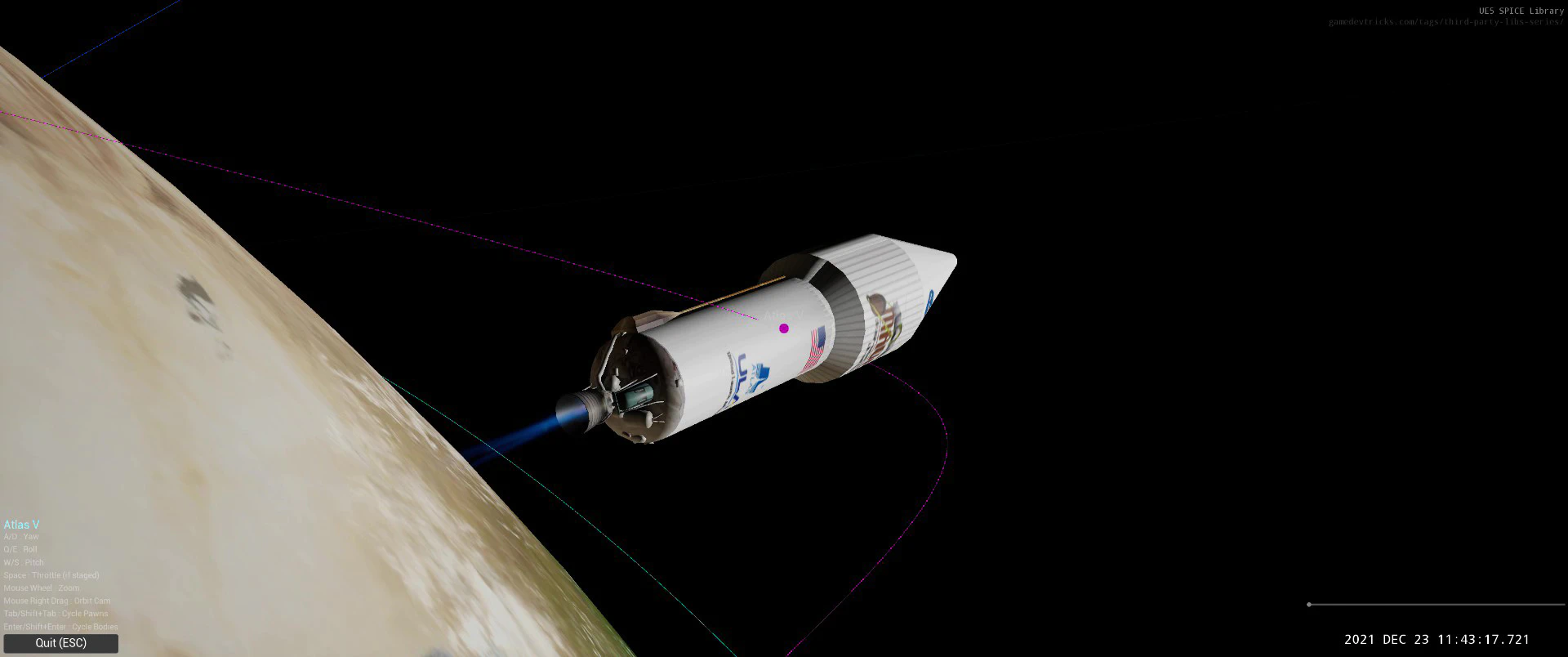
This image is from a MaxQ sample application, and demonstrates an Atlas V rocket’s Upper Stage raising its orbit. The scene and interaction were created using only Space Toolkit Blueprints.
An example of calling the toolkit from a Blueprint:
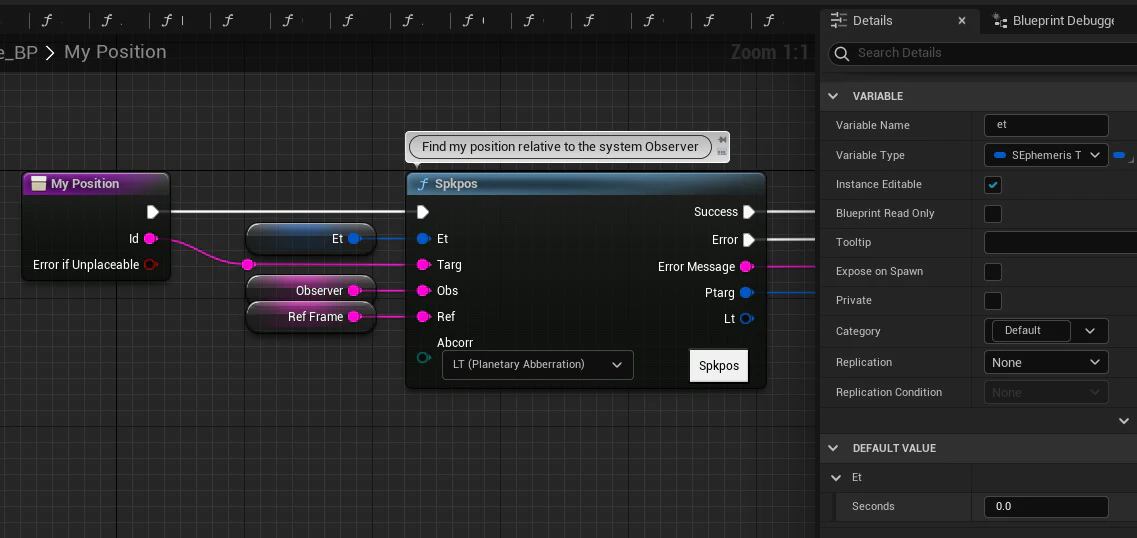
The Blueprint above calls “Spkpos”, which is functionality in the NASA SPICE Toolkit. More information on what Spkpos does can be found in the official SPICE documentation. There is a 1-1 correspondence between the fields in the NASA documentation and inputs/outputs on the Spkpos Blueprint Node.
Variable I/O Description
-------- --- --------------------------------------------------
targ I Target body name.
et I Observer epoch.
ref I Reference frame of output position vector.
abcorr I Aberration correction flag.
obs I Observing body name.
ptarg O Position of target.
lt O One way light time between observer and target.
With the toolkit setting up an entire solar system with planets, asteroids, spacecraft can take less than a day. This includes the time spent finding and importing content such as textures and models for spacecraft and bodies and look up all data necessary to simulate the system. More samples from the sample application follow. All Celestial bodies are placed and oriented accurately, along with the galactic backround. Spacecraft are placed accurate to the extent data on their locations could quickly be found. (Of course, the past/future mission positions such as Cassini are synthesized.)
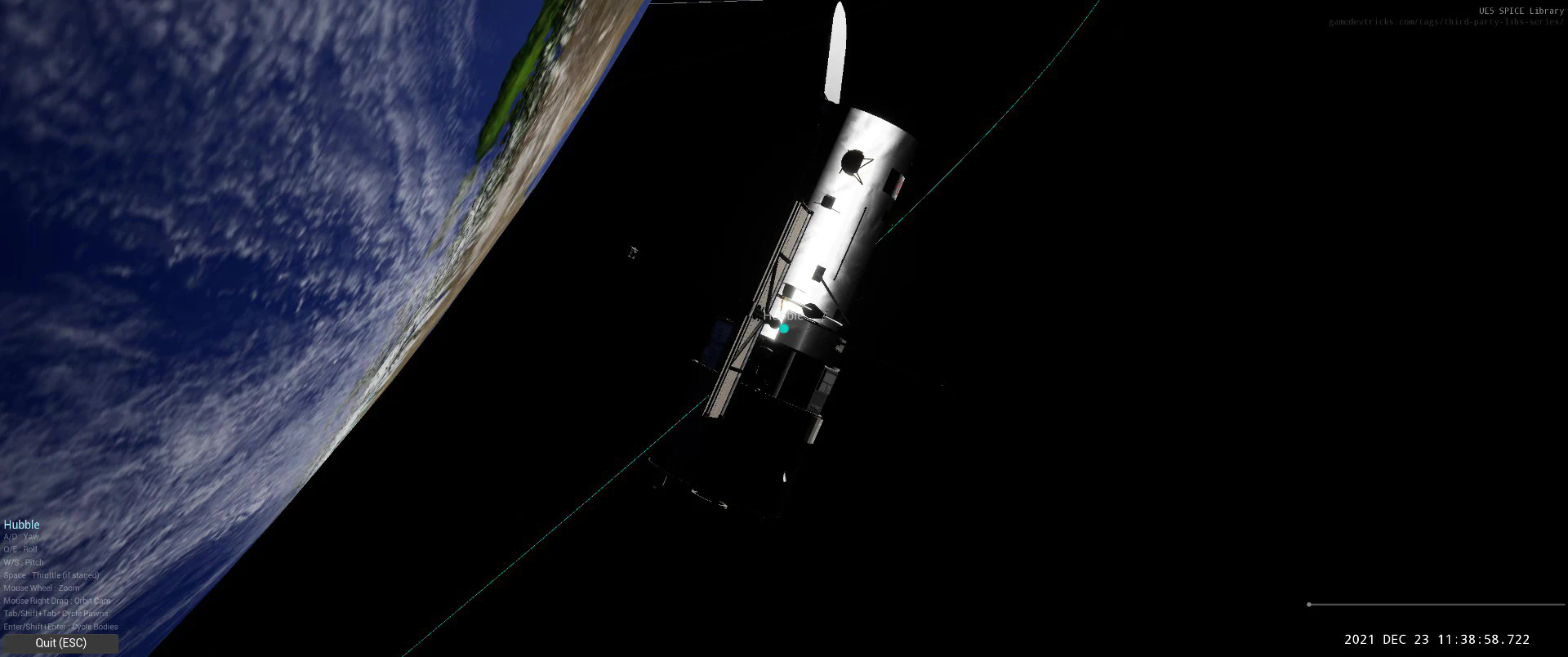
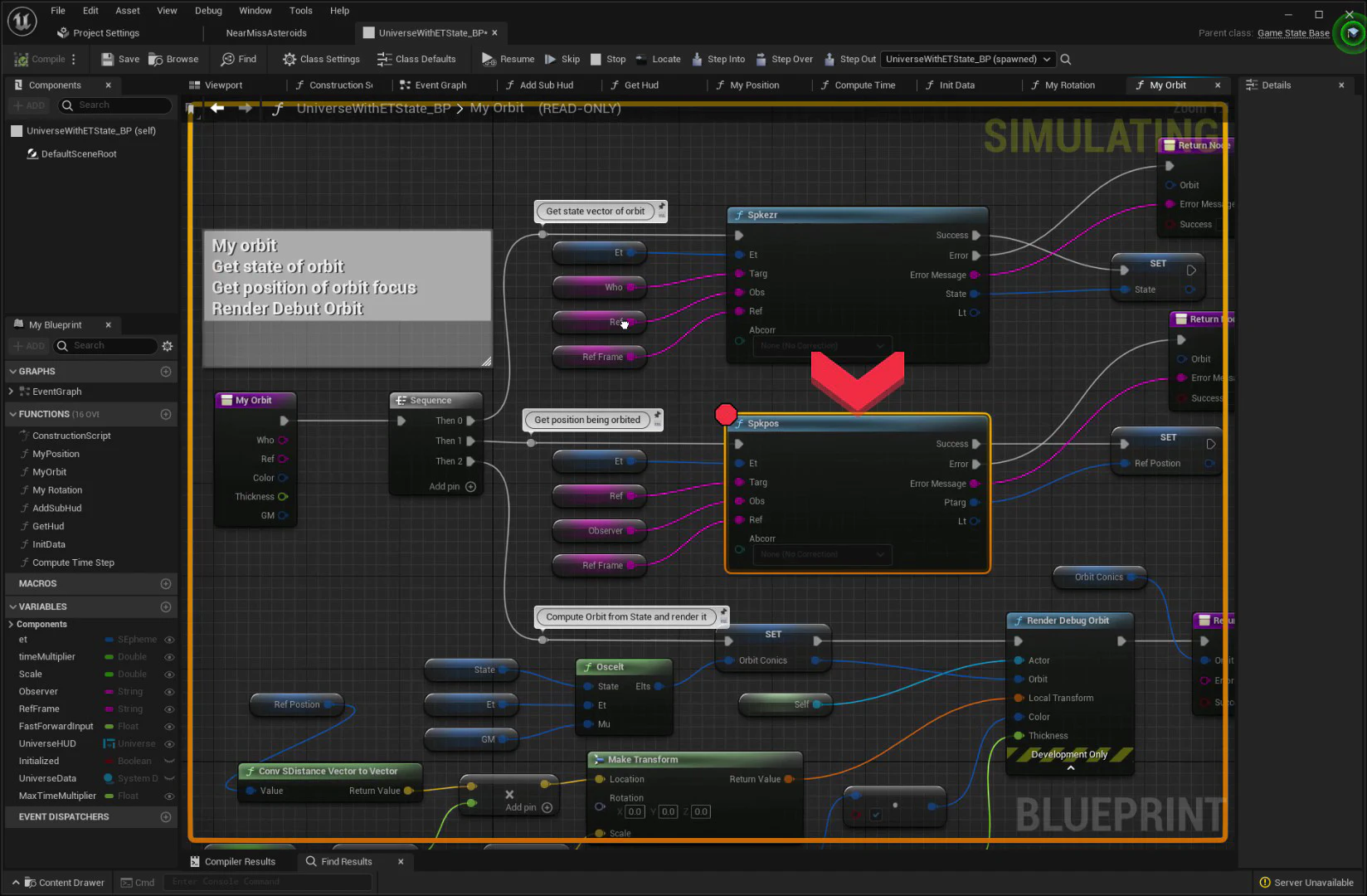
Saturn, with satellites (both natural and human-made) accurately placed in orbit. Satellite positions are faint to avoid screen clutter.
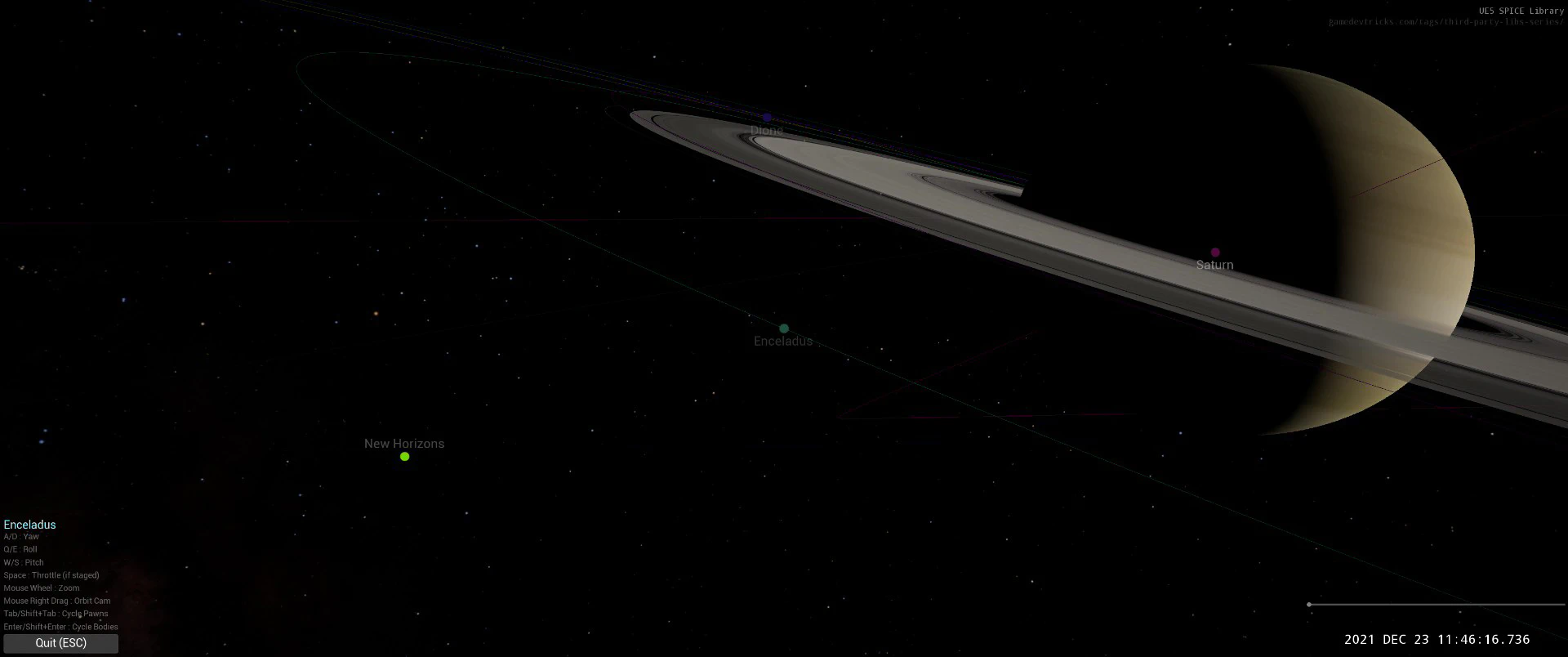
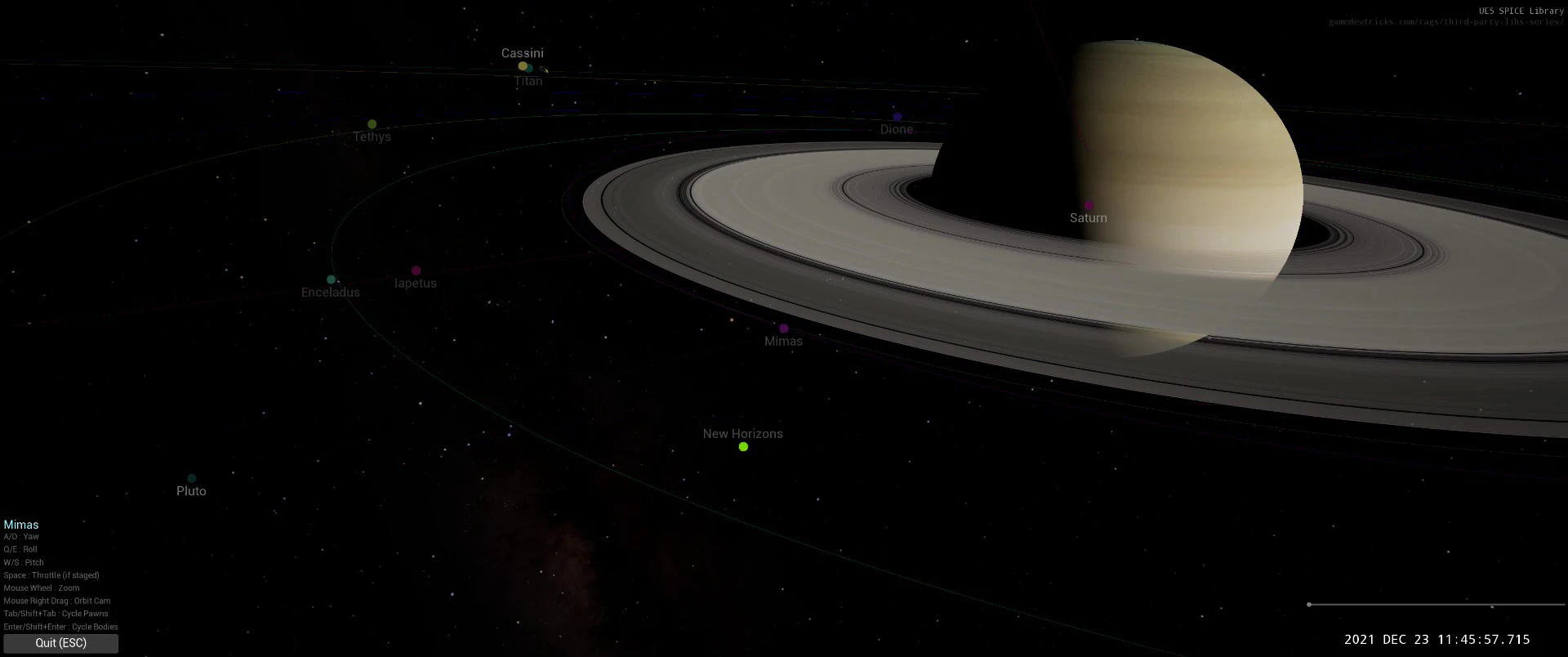
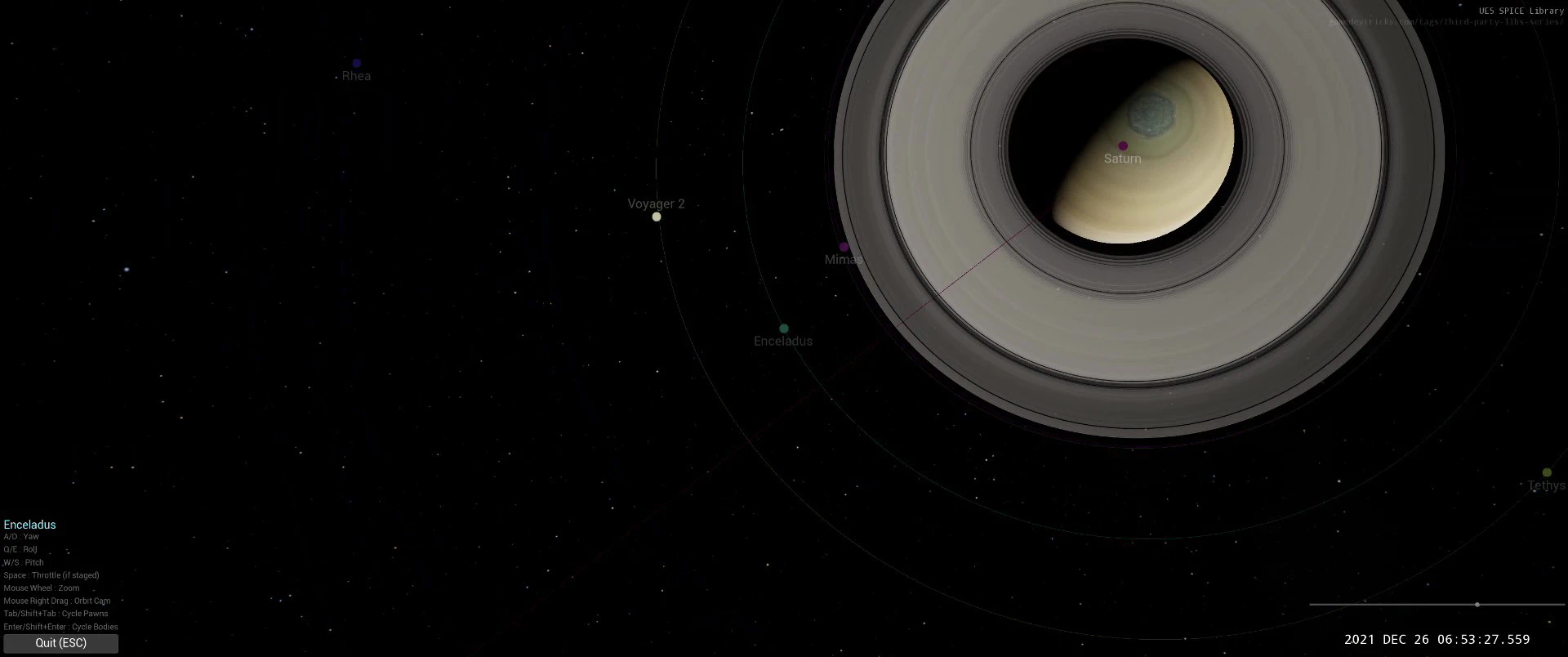
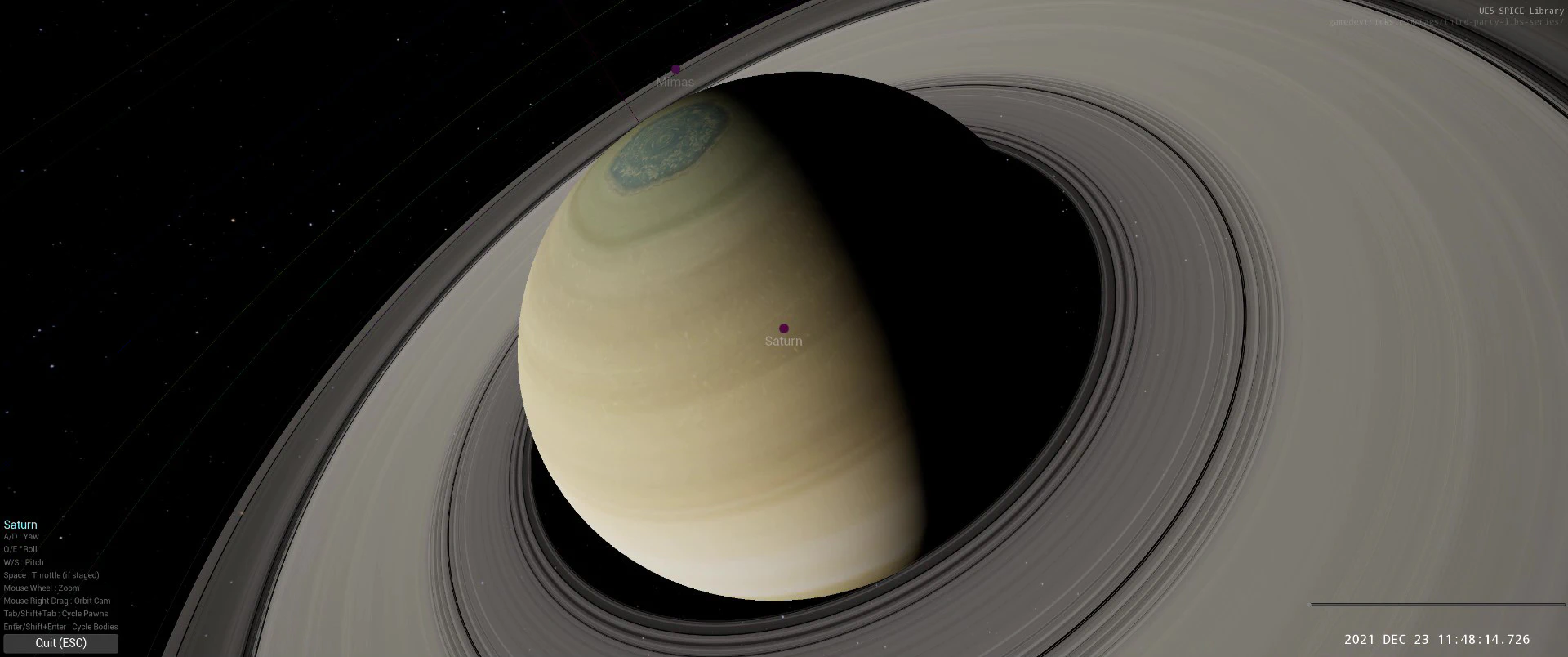
A few images from Jupiter’s corner of the solar system…:
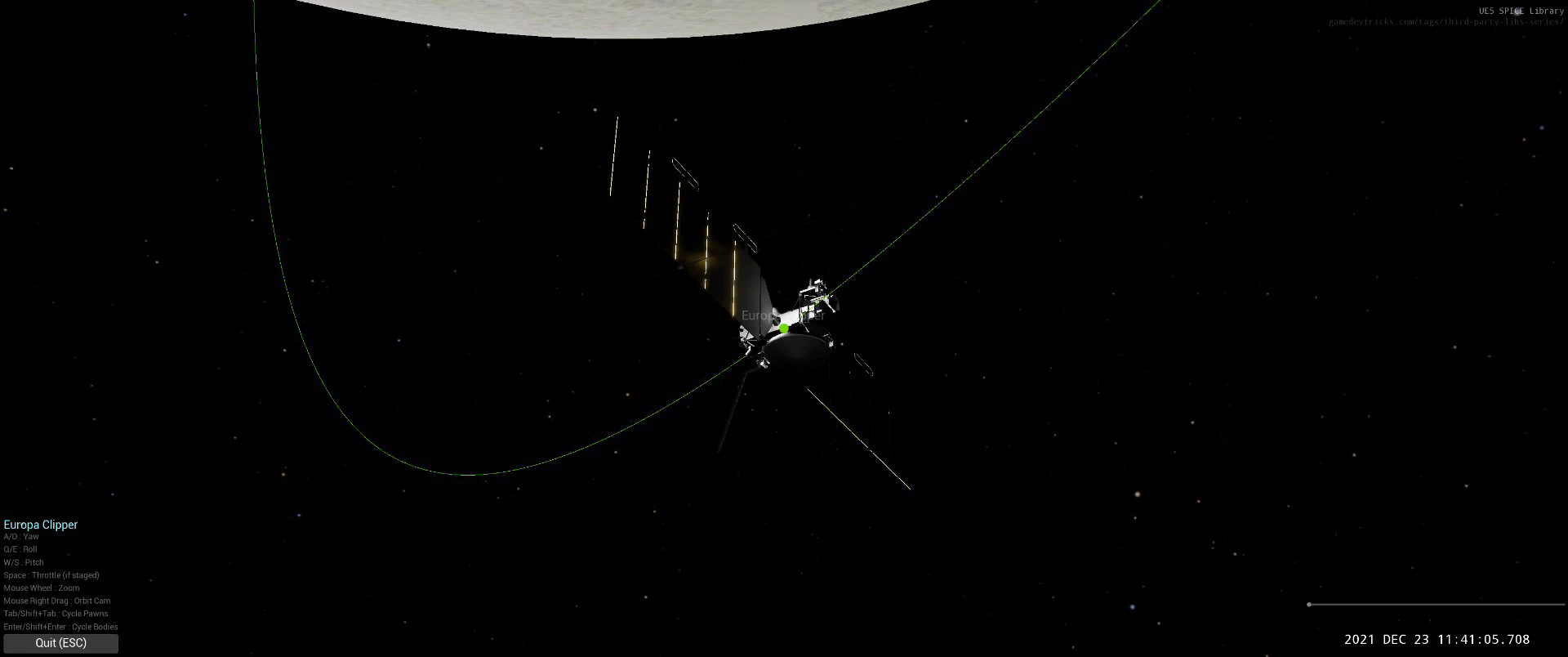
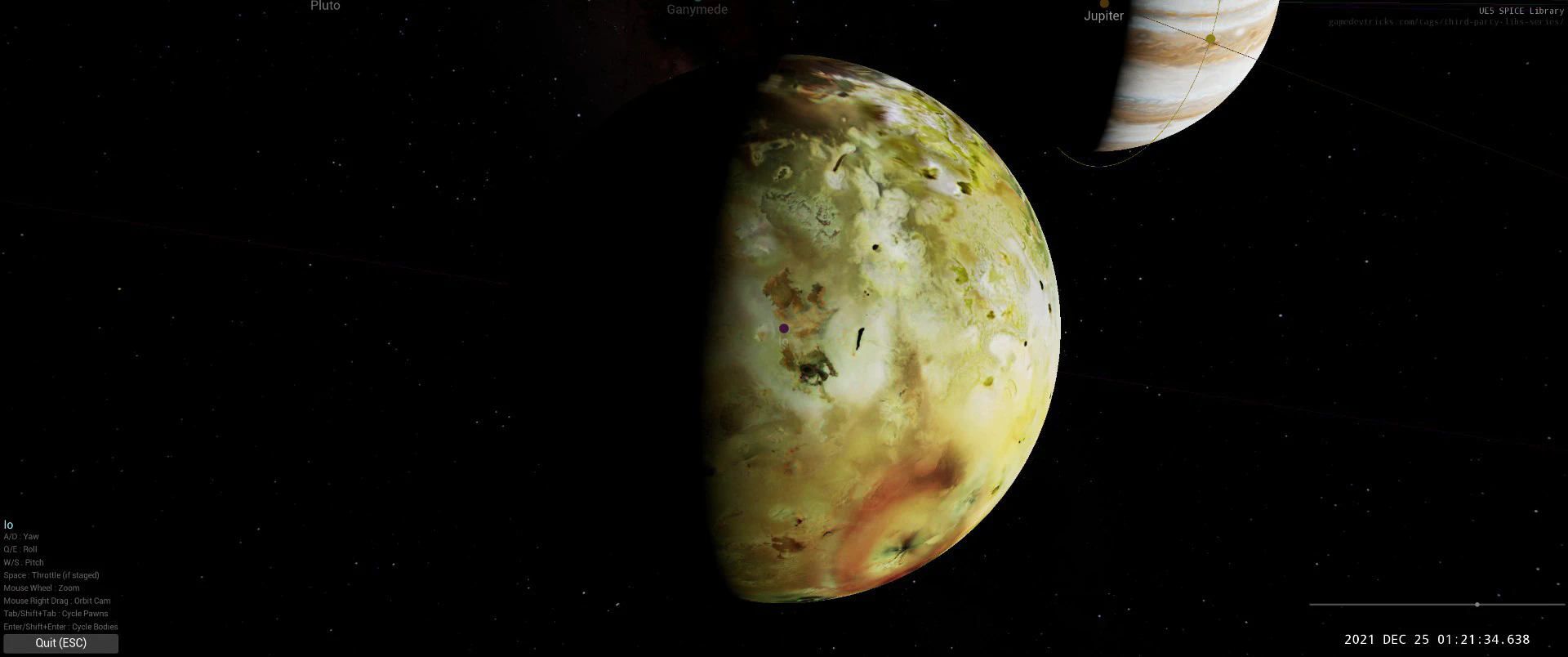
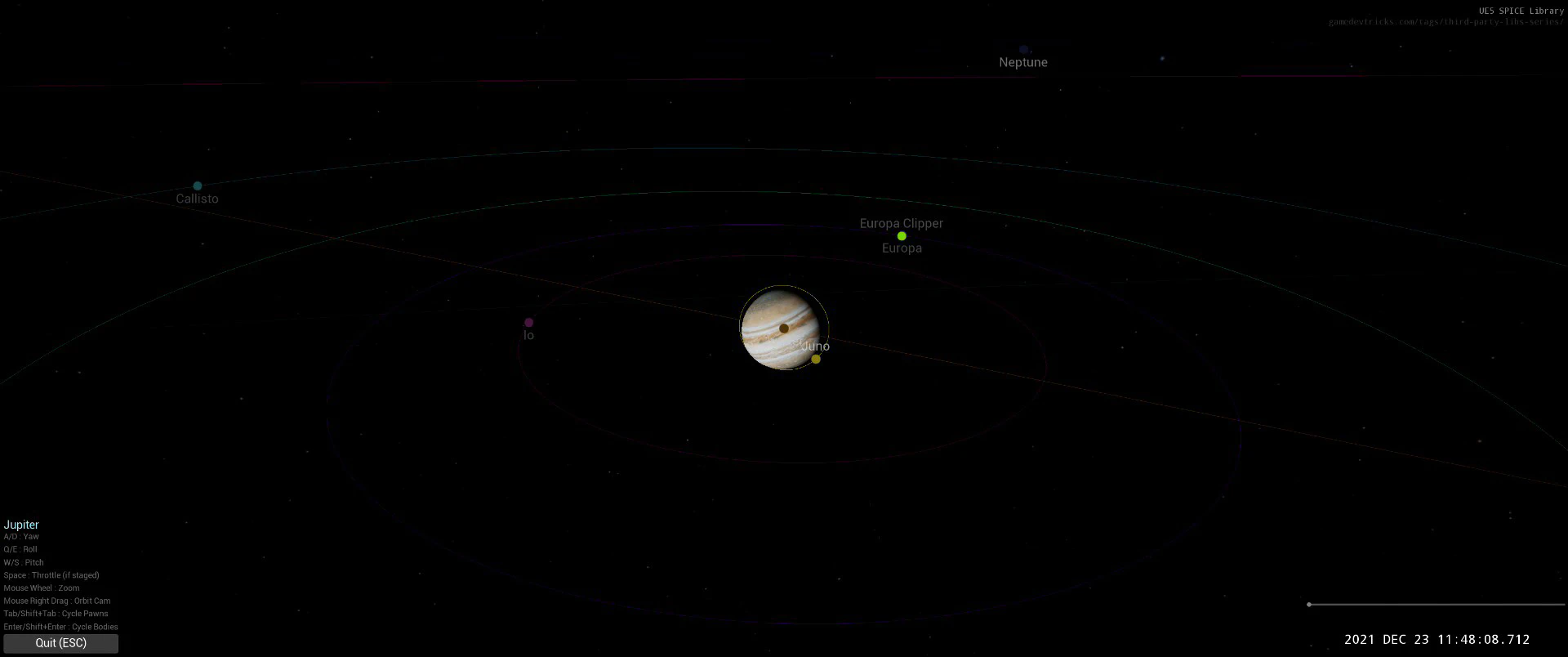
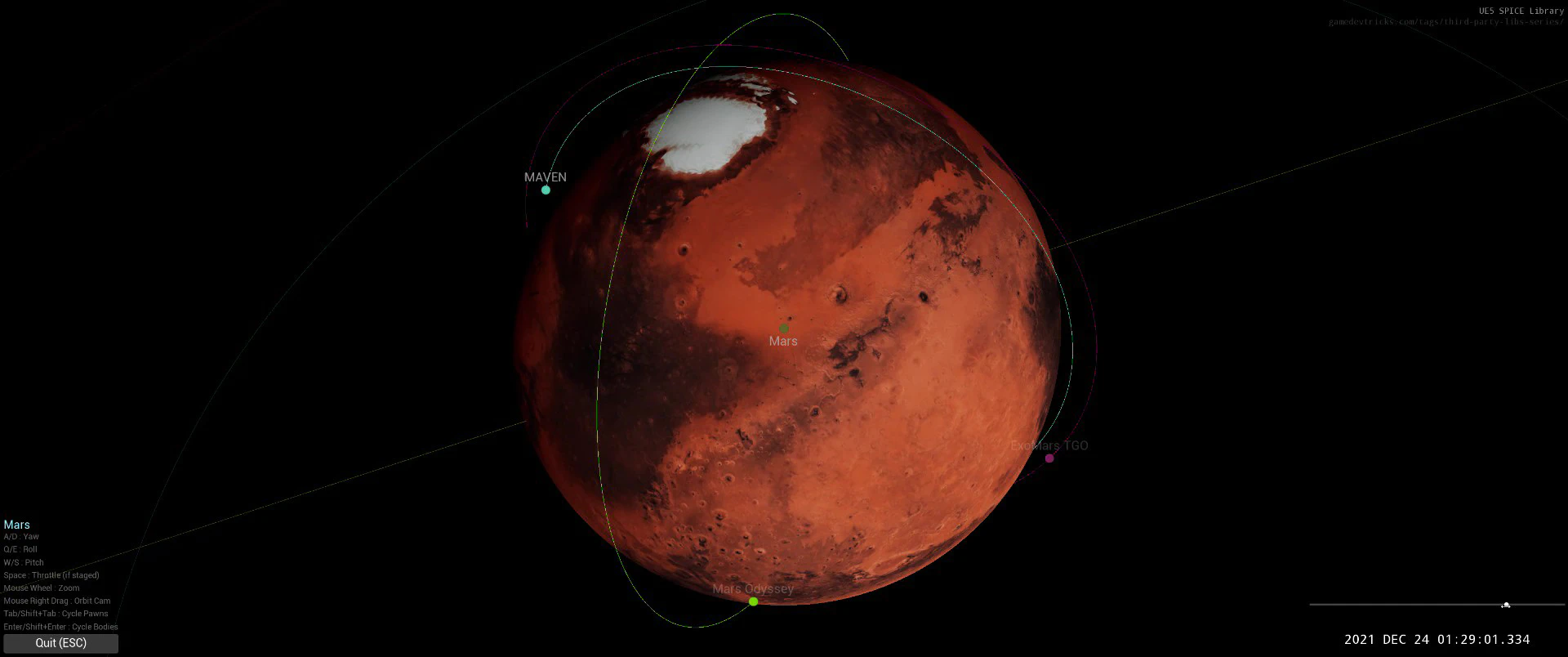
Setting up and rendering every asteroid and coment known to JPL was a snap, taking only a few minutes.
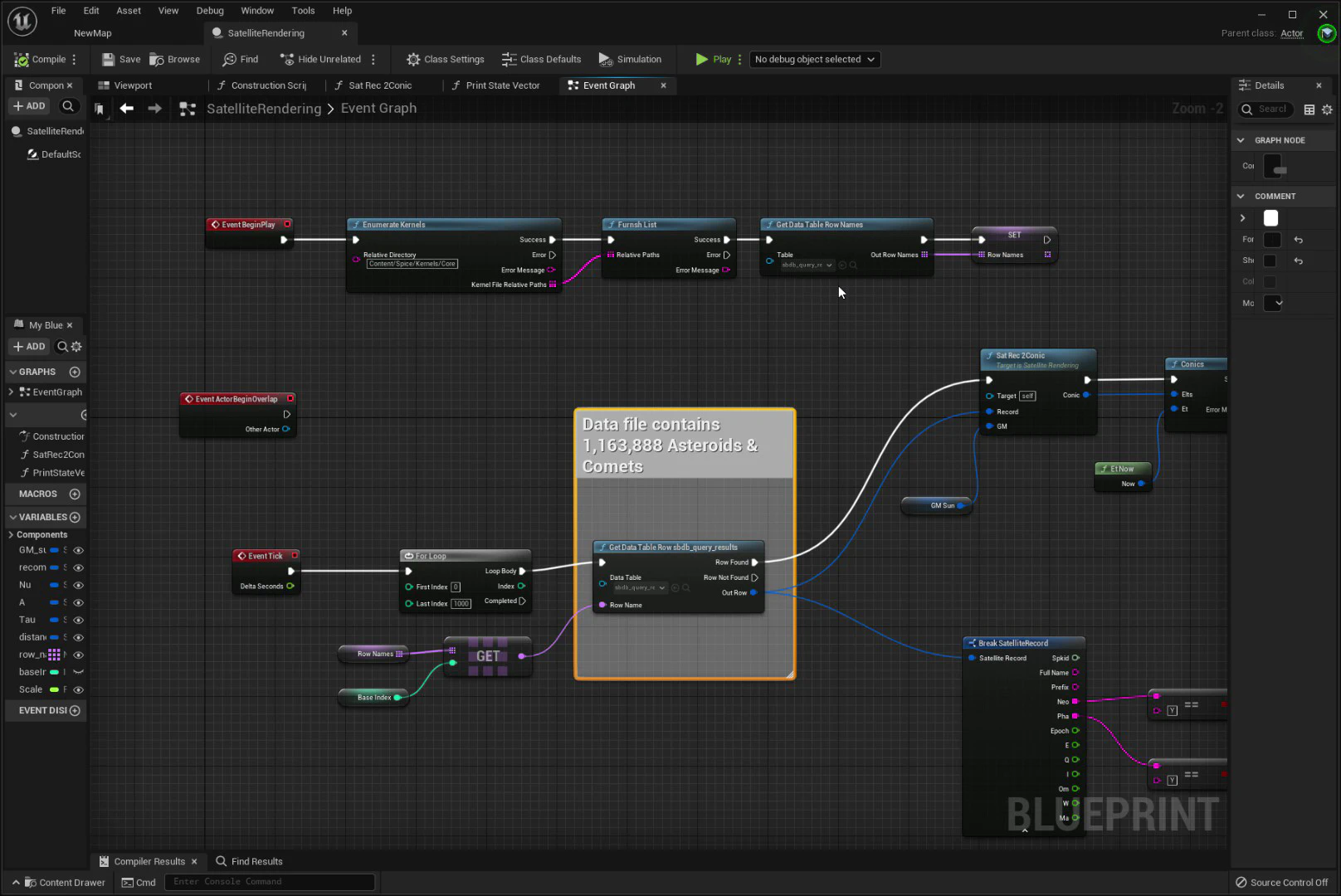
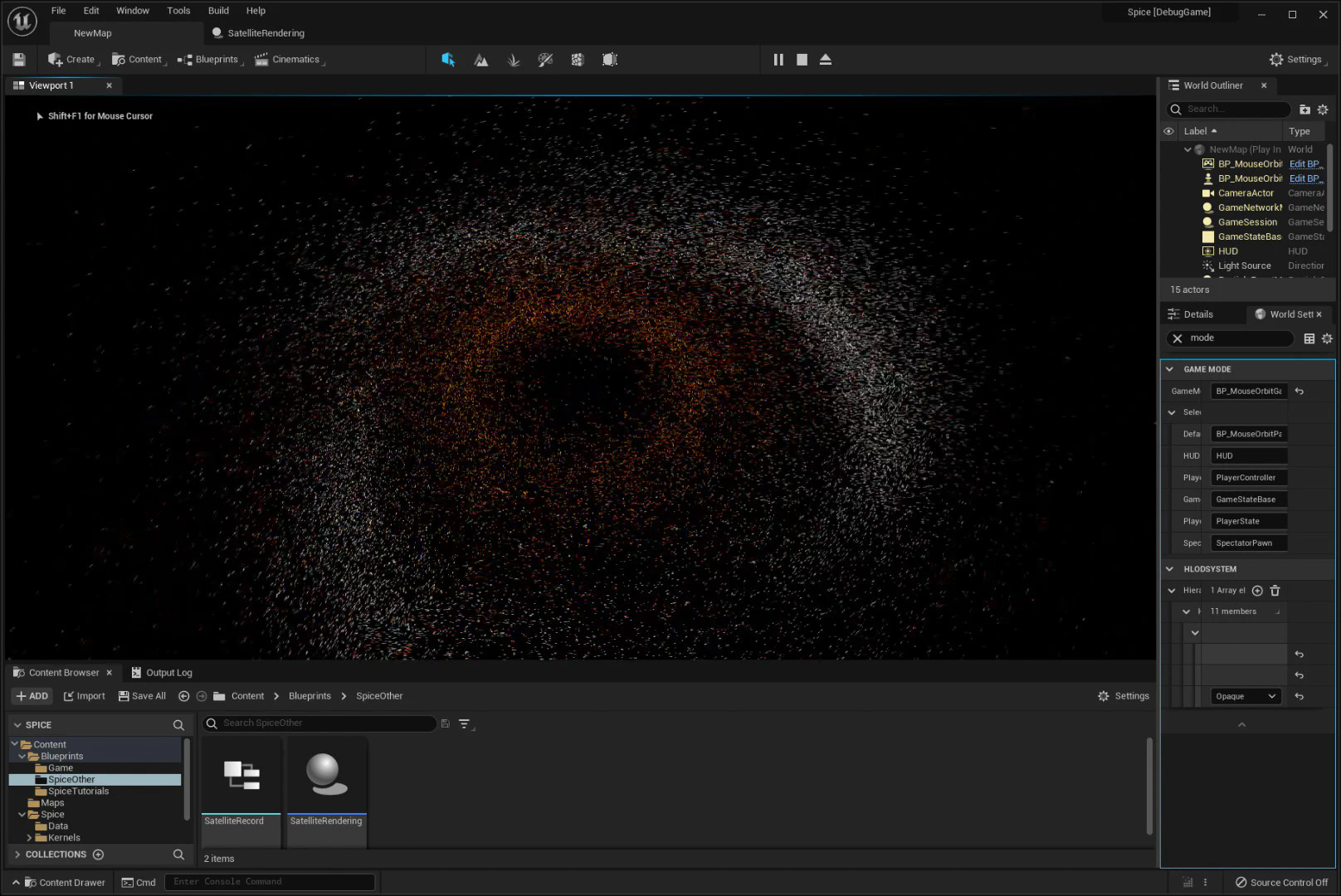
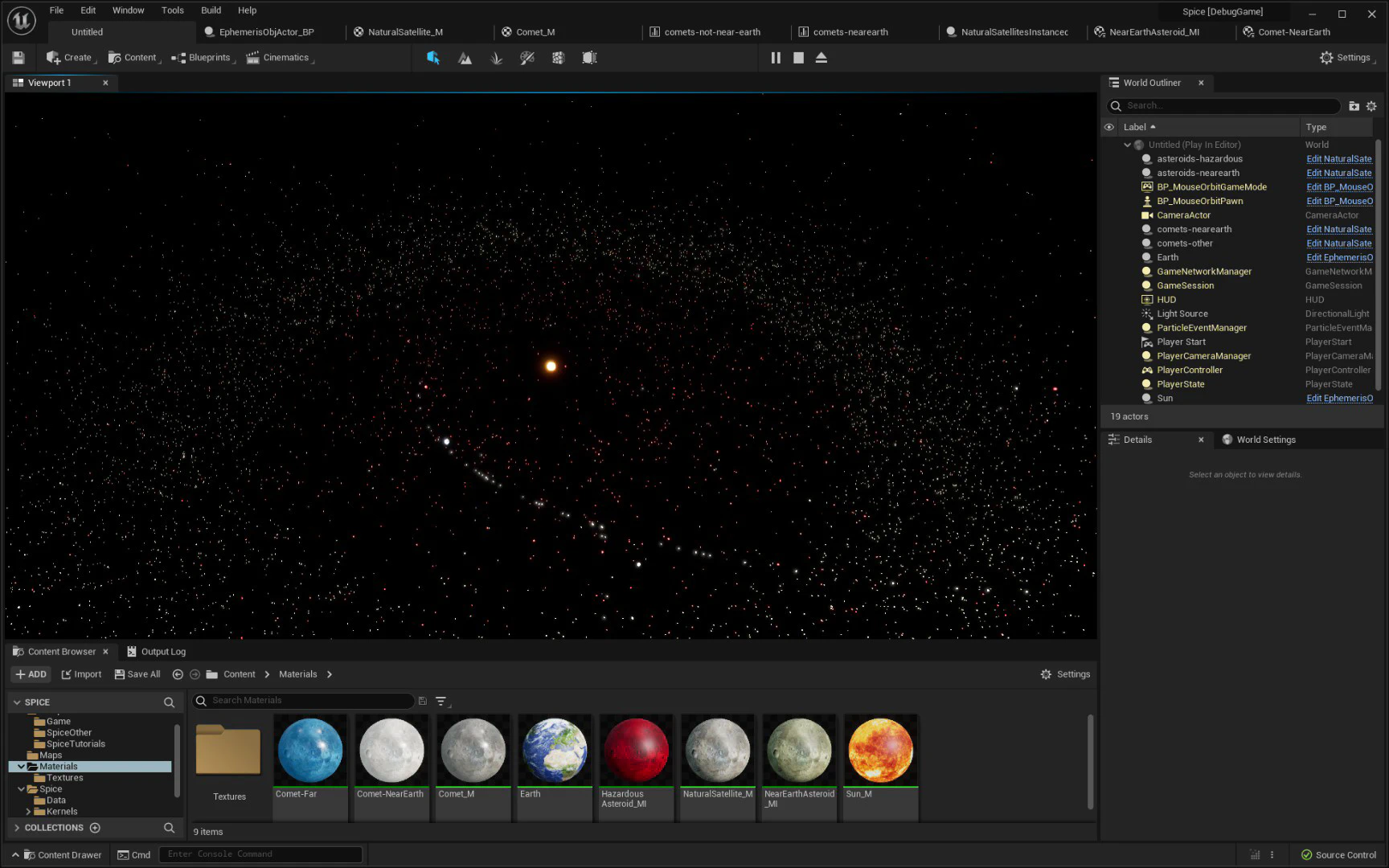
Images above were captured from several development/debug videos, including:
Additional information may be found at:
MaxQ Spaceflight Toolkit on the Unreal Engine Marketplace
MaxQ GitHub repository
MaxQ Documentation Site
Spaceflight Simulation Developers on Discord
For more information about the process of integrating NASA’s SPICE Toolkit with Unreal Engine 5, see
Integration Of NASA Spice with Unreal Engine 5 by Gamergenic. Or, feel free to contact Gamergenic directy via mailto:hellothere@gamergenic.com.